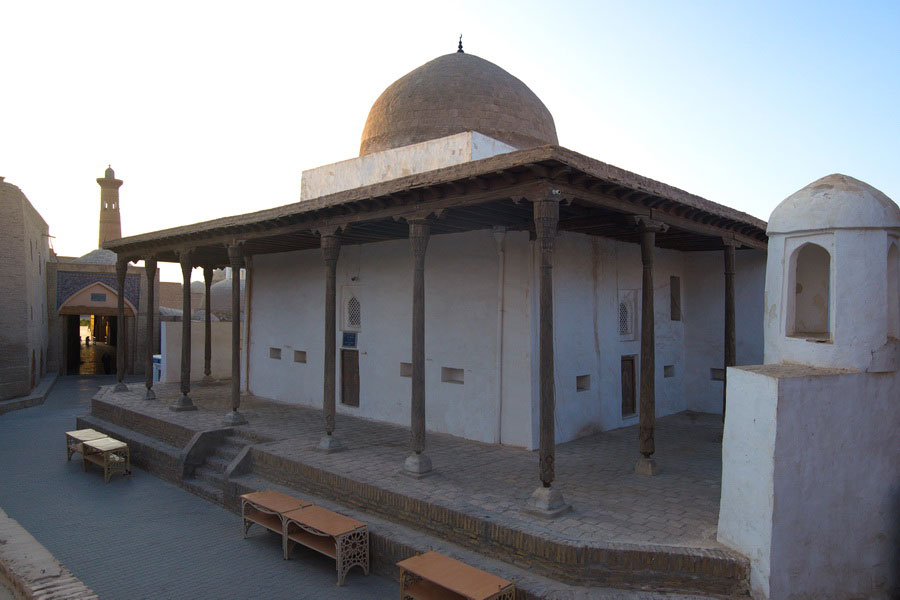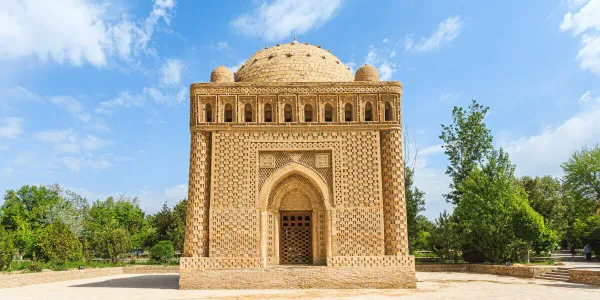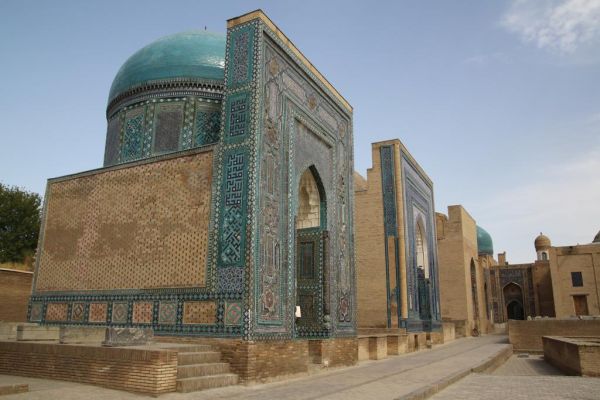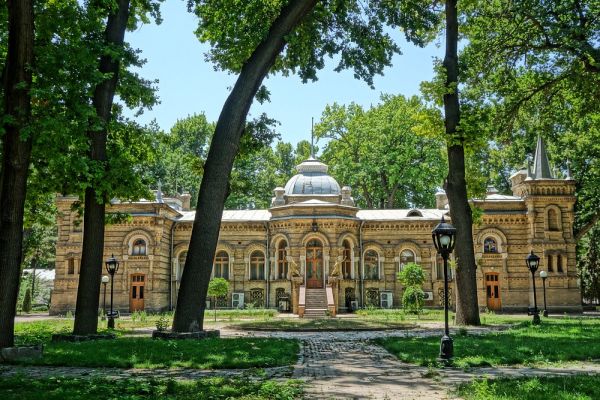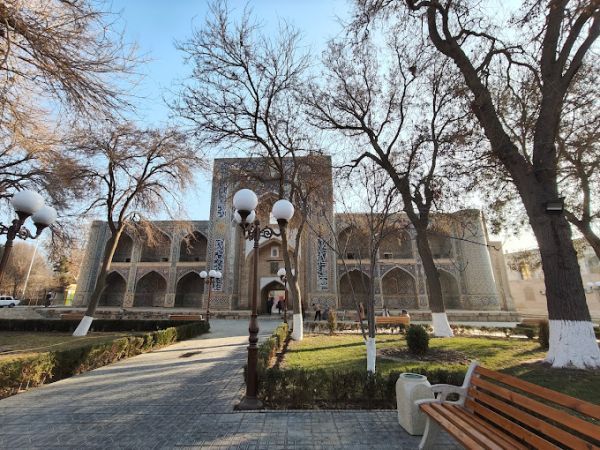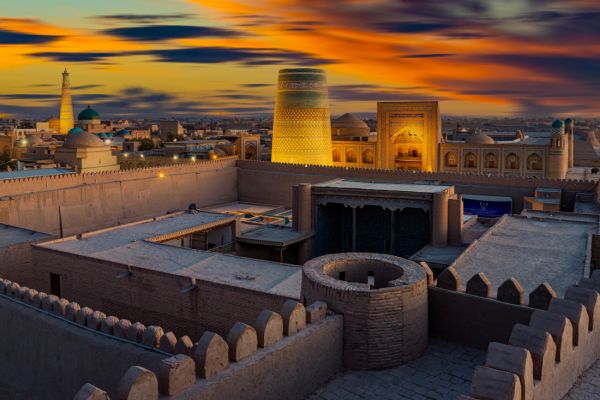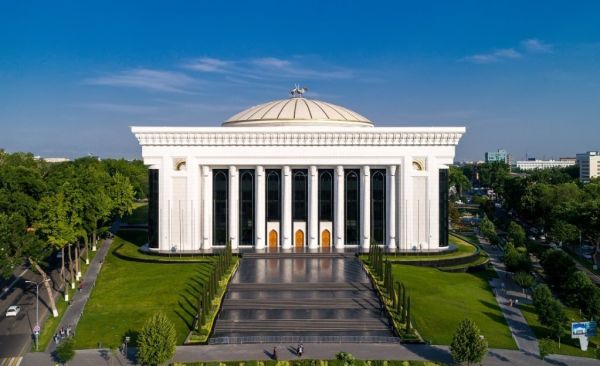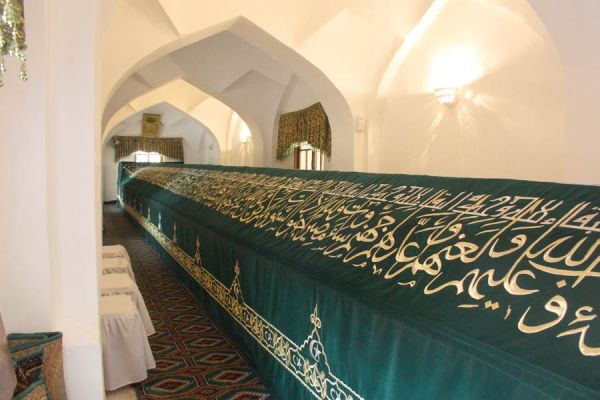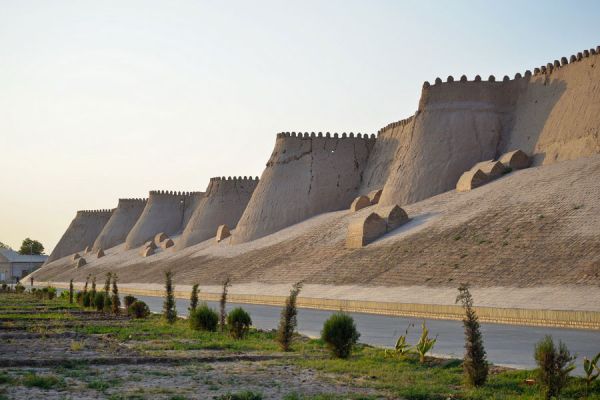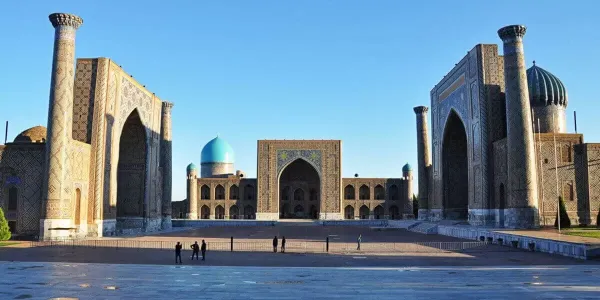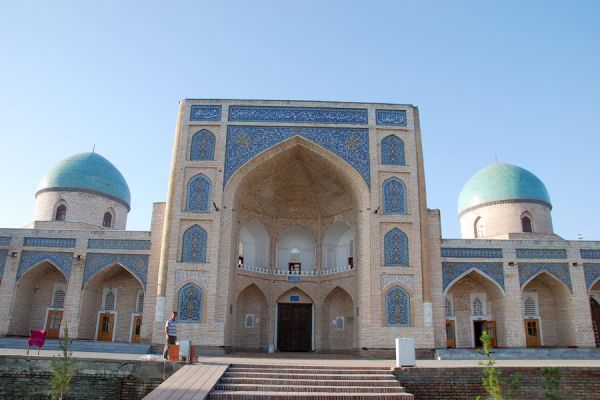Ak mosque in Khiva
The Ak Mosque, whose name translates from Uzbek as "White", is an exemplary example of a neighborhood mosque. According to the custom of Central Asian cities, in each mahali, or in another way - guzars (modest—sized residential quarters of Khiva), a mosque was built for their neighborhood. Thus, the believers of each part of the city had a place to pray and perform various religious rituals. The Ak mosque was built near the baths of Anush Khan, near the fortress gates on the eastern side of the old town of Ichan-Kala. Entrance to the museums of the old town is paid, tickets can be purchased near the main gate. According to tourists, the cost of a single ticket that allows you to visit almost all museums in Ichan-Kala is 100,000 soums.
In 1657, under Anush Khan of the Sheibanid dynasty, construction of the mosque's foundation began, but the building itself was erected two centuries later under the rulers of the Kungrat dynasty - in 1838-1842. This is evidenced by the inscription adorning the richly carved doors of the mosque. Here, among the elaborately executed ornaments and epigraphs of Arabic script, you can read information about the craftsmen who worked on the decoration of the gate — these are Nur Muhammad, the son of Adin Qalandar, and Qalandar, the son of Sayyid Muhammad. This engraving is interesting because, according to Oriental custom, the names of the venerable fathers of the two masters are indicated here.
There is a legend about the creation of the mosque, which says that the ruler of Khiva built it and the baths nearby in honor of his son Anush Khan, who saved his father from the captivity of the emir of Bukhara. It is believed that the income from the baths of Anush Khan was used to maintain the Ak Mosque.
In the 1956-1960's, the necessary repairs were carried out in the mosque, and today it continues to function. Despite its small size, the simple but exquisite Ak Mosque is considered one of the worthy examples of medieval architecture in Central Asia.
Architecture
The material used for construction is burnt brick. The domed hall of the mosque has three galleries and a mihrab in the southern wall, a special niche deepened in the wall, pointing towards Mecca. The dome of the minaret has a pointed spire. Geometric patterns are depicted on the walls, intertwined with phrases in Arabic. The main room of the mosque under the dome is called "ha", it has the shape of a square and is considered a winter building.
Since it was an ordinary mosque for daily prayers, it was built without elaborate decorations. The most elaborately executed parts are the windows and doors decorated with wood carvings. The carving is made according to ancient traditions passed down from generation to generation. Thanks to these ornaments, the mosque has an important decorative value. The windows have grilles made of white gancha, similar to plaster. According to the eastern tradition, they have a filigree-openwork pattern. The walls are also lined with snow-white ganch. On three sides of the central dome, there are multi—column ceilings - iwans, resembling terraces. Each wooden pillar of the iwans is decorated with carvings in the upper part of the columns.
The color of the ganache lining of the exterior walls is not the only reason why the mosque got its name "White". The prayer building is especially revered compared to other small structures built in this residential area. Scientists suggest that the Ak Mosque inherited its name from an older structure of the early Middle Ages, the remains of which were preserved under newly erected arches.
